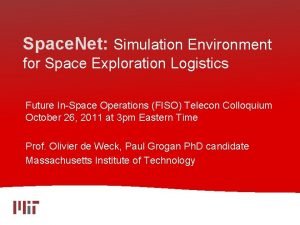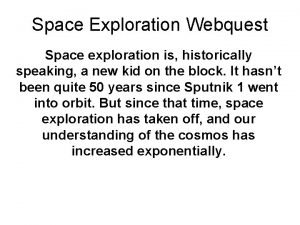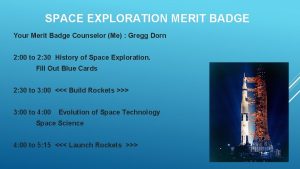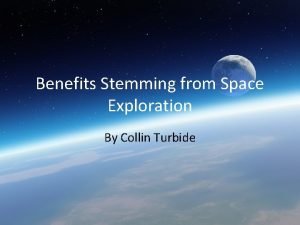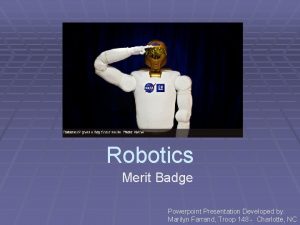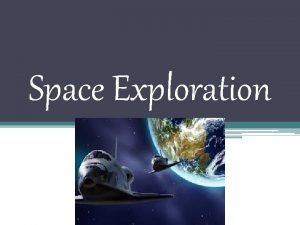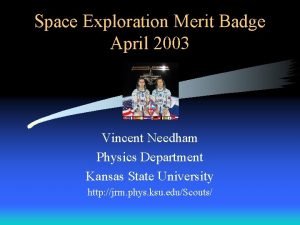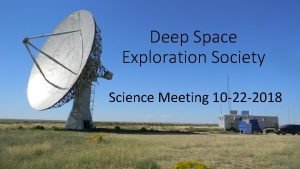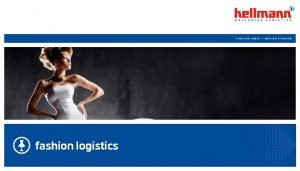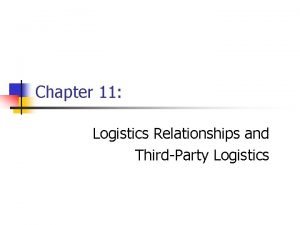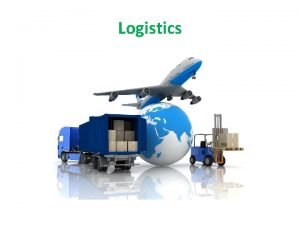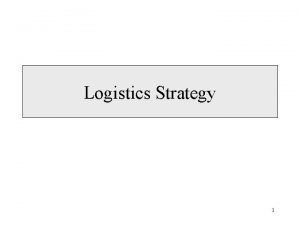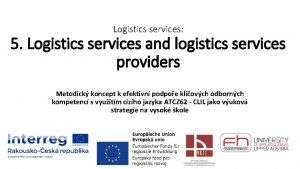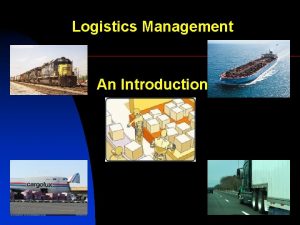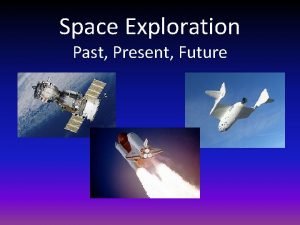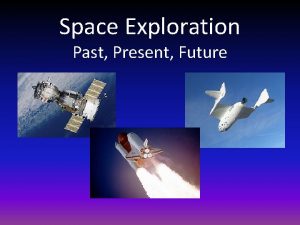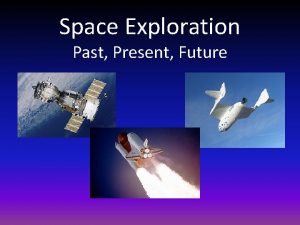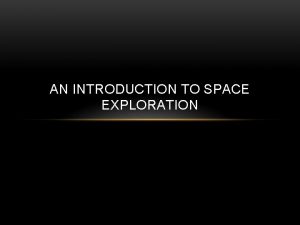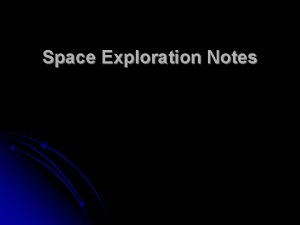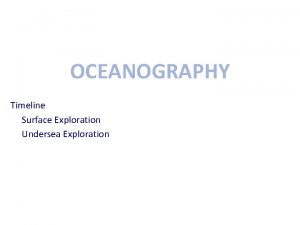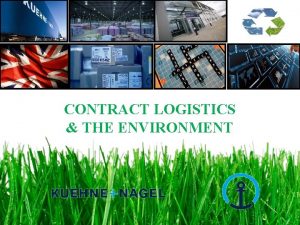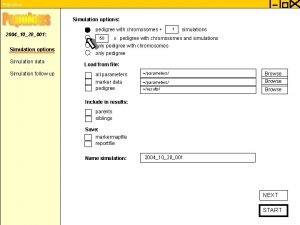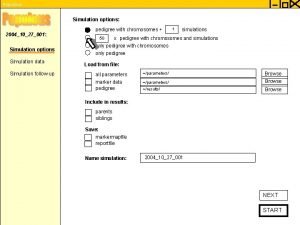Space Net Simulation Environment for Space Exploration Logistics



























- Slides: 27

Space. Net: Simulation Environment for Space Exploration Logistics Future In-Space Operations (FISO) Telecon Colloquium October 26, 2011 at 3 pm Eastern Time Prof. Olivier de Weck, Paul Grogan Ph. D candidate Massachusetts Institute of Technology

Outline • Introduction • Challenges of Space Logistics – Time-varying launch opportunities – Nested complexity and object hierarchy – Asset management in m-gravity • Space. Net Simulation Environment – Ontology of Space Logistics – Key Concepts – Space. Net 2. 5 – Discrete event simulation software – Four Application Case Studies • Conclusions 2

MIT Strategic Engineering Research Group (http: //strategic. mit. edu) • Broad research agenda in Systems Engineering with a lifecycle focus Research sponsors Strategic Engineering is the process of designing systems and products in a way that deliberately accounts for future uncertainties and attempts to maximize lifecycle value. Ilities – A Definition The ilities are desired properties of systems that often manifest themselves after a system has been put to initial use. These properties are not the primary functional requirements of a system’s performance, but typically concern wider system impacts with respect to time and stakeholders than embodied in those primary functional requirements. O. de Weck J. Agte Ref: de Weck O. , Roos D. , Magee C. , “Engineering Systems: Meeting Human Needs in a Complex Technological World”, MIT Press, Fall 2011) - Chapter 4 C. Lee D. Asai S. Nag A. Alfaris B. Baker A. Siddiqi T. Coffee S. Do G. Bounova P. Grogan T. Ishimatsu G. O’Neill S. W. Paek N. Shougarian © Olivier de Weck, October 2011 Page 3 K. Sinha H. Yue

• Definition (http: //spacelogistics. mit. edu) – Space logistics is theory and practice of driving space system design for operability, and of managing the flow of materiel, services, and information needed throughout the space system lifecycle. Campaign Analysis Asset Management ISS Resupply In-Space Refueling Launch Logistics AIAA Space Logistics Technical Committee 2008 -2010 4

Challenges of Space Logistics Earth Mars: Time-varying Launch Opportunities Can only launch missions every ~ 26 months = timeexpanded transportation. C 3 d Contour Plot [km /s ] 2 2 Ishimatsu T. , Hoffman J. , de Weck O. L. , “Interplanetary Trajectory Analysis for 2020 - 2040 Mars Missions Including Venus Flyby Opportunities”, AI 2009 -6470, AIAA Space 2009 Conference & Exposition, Pasadena, California, September 14 -17, 2009

Challenges of Space Logistics Nested Complexity and Object Hierarchy Supply Items M 02 Bags MPLM Racks MPLM Cargo Integration MPLM In Shuttle • • • Pocket Container Carrier Module Segment Compartment Element Pallet Assembly Facility* Node Vehicle • • • Item • Component Drawer • Subsystem Kit • System Locker • SRU Unit • LRU Rack • ORU Lab • CTB Platform • M-01 MPLM • M-02 Payload Bay • M-03 *In-Space Facility Fairing (e. g. , the European Technology Exposure Facility (Eu. TEF) Net cargo mass fractions are very low (<1% of launch mass). Tare mass matters. Evans W. , de Weck O. , Laufer D. , Shull S. , “Logistics Lessons Learned in NASA Space Flight”, NASA/TP-2006 -214203, National Aeronautics and Space Administration Technical Report, May 2006

Expedition 11 NASA ISS Science Officer John Phillips is working with cargo transfer bags inside the Quest Airlock 7

Challenges of Space Logistics Asset Management in m-gravity Tracking ~ 20, 000 items Manual bar-code based system Relatively accurate system, but still ~ 3% of items are tagged as lost Requires substantial manual labor in space And on the ground (ISO) (>20’/day/crew) Space Earth Russian/NASA Inventory Management System (IMS) Automate real-time asset management. Track parent-child relationships. Shull S. , Gralla E. , de Weck O. , Siddiqi A. , Shishko R. , “The Future of Asset Management for Human Space Exploration: Supply Classificatio and an Interplanetary Supply Chain Management Database”, AIAA-2006 -7232, Space 2006, San Jose, California, Sept. 19 -21, 2006 8

Space. Net 2. 5 Modeling and Simulation of Space Logistics A computational environment for • Modeling space exploration from a logistics perspective • Discrete event simulation – at the individual mission level (sortie, pre-deploy, re-supply, …) – at the campaign (=set of missions) level • Evaluation of manually generated exploration scenarios with respect to feasibility and measures of effectiveness • Visualization of the flow of elements, agents and supply items through the “interplanetary” supply chain • Optimization of scenarios according to selected MOEs • Provide software tool for users (= logisticians, mission architects) to support trade studies and architecture analyses. Open Source Release 2. 5. 2 Sep 2011 Under GNU General Public License http: //spacenet. mit. edu 9

Building Blocks of Space. Net • Nodes – Surface, Orbital, Lagrange • Objects – Supply Items, Elements, Crew (Agents) • Network (Time-Expanded) – Time-dependent Edges – Surface, Trajectory, Flight • Events – Create, Transfer, Remove, Reconfigure, Demand – Higher-level Processes (Transport, Exploration) Read Events Add Events Simulator Alter State time = 4. 2 MOE 1 = 39. 294 MOE 2 = 198. 339 Read State Domain Nodes, Edges Elements, Supplies Grogan P. , Armar N. , Siddiqi A. , de Weck O. , Shishko R. , Lee G. , “Object Oriented Approach for Flexibility in Space Logistics Discrete Slide 10 Event Simulation”, AIAA-2009 -6548, AIAA Space 2009 Conference & Exposition, Pasadena, California, September 14 -17, 2009

Slide 11

Case 1: ISS Resupply • Assembly nearly complete • Lifetime extended to 2020 or beyond • Most critical resupply vehicle retired (STS Shuttle) • Six or more vehicles to participate in ISS operations • Analyze scheduled supply versus estimated demands Grogan P. T. , Yue H. , de Weck O. , “Application Case Studies for Flexible Space Logistics Modeling and Simulation using Space. Net 2. 5”, AIAA Space 2011 Conference & Exposition, Long Beach, California, September 27 -29, 2011 Image credit: NASA Slide 12

ISS Resupply Scenario Sept. 2010 – Dec. 2015: 77 missions 2 STS 8 Cygnus 22 Progress 6 HTV 22 Soyuz 4 ATV 12 Dragon 1 Proton-M Slide 13

ISS Resupply Analysis Demands • 10 tons/year spares • 15 tons/year science • 7. 5 kg/person/day consumables Results • Supply capacity exceeds demands • Existing stockpile can supply gaps • Frequent resupply missions (every 20 days) Slide 14

Case 2: Lunar Outpost Campaign • Lunar south pole outpost buildup to continuous human presence • Based on NASA LSSPO / Cx. AT-Lunar Scenario 12 – Well-vetted case – Sufficiently detailed design • Surface mobility elements: – Lunar electric rover (LER) – Tri-ATHLETE Image credit: NASA Slide 15

Lunar Outpost Scenario Sept. 2021 – Dec. 2028: 17 missions 2 sortie-style (1 un-crewed) 7 outpost-style 8 cargo resupply Excursions to Malapert Crater and Schrödinger Basin Slide 16

Lunar Outpost Analysis • 7. 5 kg/person/day consumables • 1000 kg/year ISRU oxygen production • 10% dry mass/year spares during crewed periods • 5% dry mass/year spares during uncrewed periods • Extra overhead mass for packaging (50120% based on COS) Slide 17

Case 3: Near-Earth Object Sortie • Evaluate 2 -person, 5 -day exploration at asteroid 1999 -AO 10 • Constellation-style heavy-lift launch vehicle – Increased upper stage propellant – Increased service module propellant – Greatly expanded cargo capacity • Significant assumptions: – – No airlock in CEV Zero-loss cryo-coolers Restartable in-space stages 7. 5 kg/person/day demands including packaging mass Image credit: NASA Slide 18

Near-Earth Object Scenario Sept. 2025 – Feb. 2026: 1 mission 2 crew members (7. 5 kg/person/day demands) Upper Stage reused for Earth departure and 1999 -AO 10 arrival 5 -day exploration at 1999 -AO 10 Slide 19

NEO Sortie Analysis • Small residual propellant values: ‒ Upper stage: 0. 1% ‒ Service module: 0. 2% • Limited volume and mass capacity in CEV • No ECLSS closure • Cryogenic fuel losses • No airlock for EVA exploration • Technically “feasible” though not realistic Slide 20

Case 4: Mars Exploration Campaign • A “flexible path to Mars” – Four interchangeable missions – Use of propellant depots in Earth and Mars orbit – Human/robotic exploration – Pirogue vehicle for human exploration in the vicinity of Mars • Builds on concepts in NASA Design Reference Architecture 5. 0 NASA/NIA 2010 RASC-AL Competition Winner Image credit: NASA Slide 21

Mars Exploration Scenario 2034 -2053: 4 flexible missions Mars Tele-exploration Mission (MTM) – 3 kg returned (hoppers) Phobos and Deimos Sorties (PDS) – 150 kg returned (Pirogue) Phobos Exploration Mission (PEM) – 150 kg returned Mars Surface Mission (MSM) – 250 kg returned Slide 22

Mars Exploration Campaign Bat Chart in Space. Net Slide 23

Mars Exploration Analysis Figure of Interest MTM PDS PEM Ares V launches (mission payloads) 2 6 1 681. 7 3 3 510. 9 4. 7 12. 5 1. 2 360 0 2 6 1 681. 7 2 150 510. 9 4. 7 12. 5 1. 2 0 28 2 4 6 11 1 1 681. 3 1, 448. 7 1 1 150 250 511. 9 1, 019. 1 4. 8 47. 3 12. 5 15. 3 1. 2 12. 3 0 1, 060 360 2, 120 Ares V launches (PRM payload) Crew launches Total mass in LEO (m. T) Number of sites sampled Returned sample mass (kg) EDS propellant usage (m. T) EDS propellant remaining (m. T) Crew consumables demand (m. T) Crew consumables remaining (m. T) Robotic-days of exploration (robot-days) Human-days of exploration (human-days) MSM Campaign Totals 10 29 4 3, 493. 4 5 553 2, 552. 8 61. 5 52. 8 15. 9 1, 420 3, 568 Slide 24

Overview of Space. Net Modeling Flexibility ISS Resupply Lunar Outpost NEO Sortie Mars Exploration Campaign Nodes 9 5 4 10 Edges 13 6 3 23 Missions 78 17 1 21 Events 271 156 6 337 Elements Types 14 30 11 32 Elements 90 140 12 234 1, 920 2, 628 148 6, 911 Duration (days) Slide 25

Conclusions • Space Exploration Logistics is challenging and distinct from terrestrial logistics • Key issues are launch windows, competition for manifest space, accommodation mass overhead. . • Need to move from individual missions to campaigns of integrated missions (also for purely robotic missions) • Space. Net is a flexible and user friendly environment for integrated mission planning and logistics analysis Slide 26

Questions? Acknowledgements: – NASA Exploration Systems Mission Directorate for funds for Space. Net 1. 3 development – Jet Propulsion Laboratory for support in developing Space. Net 2. 5 – Do. D, Air Force Office of Scientific Research, National Defense Science and Engineering Graduate (NDSEG) Fellowship, 32 CFR 168 a spacenet. mit. edu Image credit: NASA Slide 27
 Exploration logistics
Exploration logistics Space exploration webquest
Space exploration webquest Space merit badge
Space merit badge Space exploration conclusion
Space exploration conclusion The father of modern rocketry
The father of modern rocketry First aid merit badge powerpoint
First aid merit badge powerpoint What are the benefits of space exploration
What are the benefits of space exploration Space exploration merit badge
Space exploration merit badge Deep space exploration society
Deep space exploration society Global fashion logistics
Global fashion logistics Financial environment in business environment
Financial environment in business environment Kontinuitetshantering i praktiken
Kontinuitetshantering i praktiken Typiska drag för en novell
Typiska drag för en novell Nationell inriktning för artificiell intelligens
Nationell inriktning för artificiell intelligens Ekologiskt fotavtryck
Ekologiskt fotavtryck Shingelfrisyren
Shingelfrisyren En lathund för arbete med kontinuitetshantering
En lathund för arbete med kontinuitetshantering Personalliggare bygg undantag
Personalliggare bygg undantag Vilotidsbok
Vilotidsbok A gastrica
A gastrica Förklara densitet för barn
Förklara densitet för barn Datorkunskap för nybörjare
Datorkunskap för nybörjare Tack för att ni lyssnade bild
Tack för att ni lyssnade bild Att skriva en debattartikel
Att skriva en debattartikel Magnetsjukhus
Magnetsjukhus Nyckelkompetenser för livslångt lärande
Nyckelkompetenser för livslångt lärande Påbyggnader för flakfordon
Påbyggnader för flakfordon Arkimedes princip formel
Arkimedes princip formel
